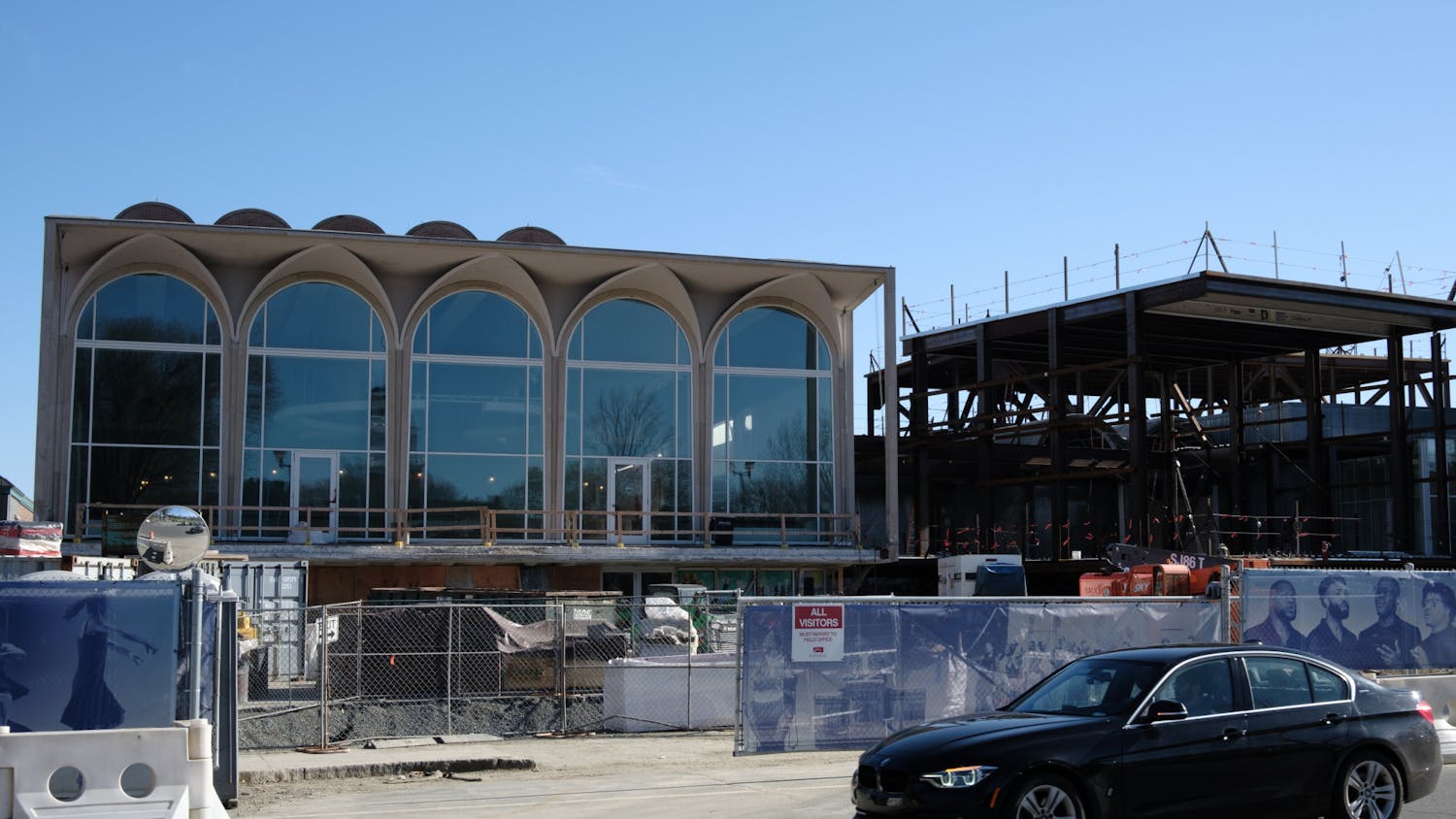The studio art department gives each of its interns the opportunity to create an installation to be displayed in the Barrows Rotunda for a month and a half. According to the department's website, four graduates with studio art majors or minors are selected by the department annually to stay on for another year as studio art interns. In addition to constructing an exhibit for the Barrows Rotunda, the interns are provided with a small stipend and serve as mentors to undergraduate students.
The Barrows Rotunda the cylindrical glass case located at the entrance of the Hop is a dynamic exhibit space because of its unusual shape and prominent public location. For this reason, Zak said she chose to hang barbed wire throughout the rotunda.
"It would be a shame not to take advantage of [the Rotunda's shape] and incorporate sculpture in some way," Zak said.
The artist added that the barbed wire is intended to reflect the varying pressure and darkness of lines found in drawings.
Zak not only accomplishes this goal masterfully, but surpasses expectations with her impressively dynamic juxtaposition of media.
In addition to filling the space of the Barrows Rotunda with zigzags of barbed wire, the artist also makes the ground her canvas by creating a painting with bold transitions between black, white and grey on the floor.
Apart from modelling her installation on a "3-D line drawing," Zak said she also drew inspiration from previous experiences to "expose materials for what they are" and convey a "beauty in simplicity" with her artwork.
She achieves the same goals in her Barrows Rotunda installation, allowing the simplicity of her materials to bring a stark elegance to the exhibit.
The stagnant, almost haunting effect of the barbed wire is interrupted by the painting, which brings a strong sense of movement to the installation.
The juxtaposition of the painting and sculpture creates an interesting tension that encourages viewers to consider the exhibit as a whole, moving their line of sight throughout the space rather than focusing on a single part of the installation.
Zak said she drew inspiration from her fellow interns for the exhibit, calling the installation the product of a "collaborative process."
In fact, it was a fellow intern, Max Heiges '10, who encouraged Zak to incorporate painting into her exhibit. Zak was hesitant to take Heiges' suggestion at first, she said.
"I was nervous about it because I've never done anything like this, and it's just leaving a lot until installation," Zak explained.
Zak said the process of painting the floor for the installation became a type of performance art, with the artist herself incorporated into the exhibit.
According to Zak, students would stop to watch as she worked on the painting, adding another complex layer to her already dynamic installation.
"People are constantly walking around [the Hop]," Zak said. "And I worked on this for five days straight."
However, this kind of theatricality presented risks, the artist said.
"Not every painting I do is successful," Zak said. "So whether or not [this painting] is successful becomes part of the installation."
Despite the risks of public performance, Zak said she was "very pleased with the way it turned out."
The artist added that she is eager to see how her exhibition resonates with viewers.




